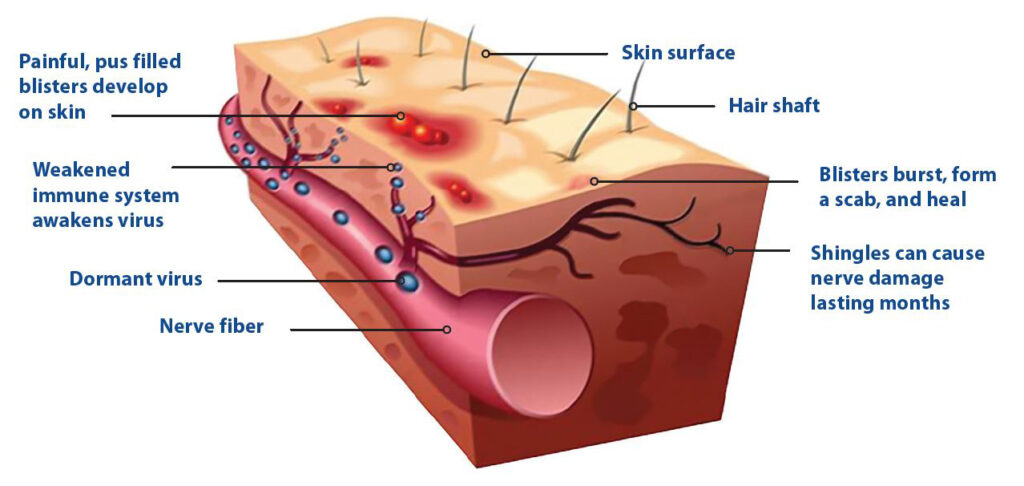Articles by Laxmaiah Manchikanti, MD
and Mahendra Sanapati, MD

What is post Herpetic Neuralgia or pain after shingles?
Post Herpetic Neuralgia is a condition which produces severe, agonizing pain and suffering for many patients following the viral infection called herpes zoster, most commonly known as shingles. This painful condition may last several months to years.
Shingles or herpes zoster is an acute viral infection affecting the skin and nerves which show up as small blisters appearing along certain nerve segments. Shingles most commonly occurs in individuals with reduced defense mechanisms to fight infection by reactivation of the chicken pox virus which was inactive. It most commonly affects the chest wall and upper back in 50% of cases, neck and upper limbs in 20% of cases, lower back and lower limb in 15% of cases, and the eye in 15% of cases.

This disease mainly involves a nerve root ganglion, a collection of nerve tissue which may be replaced by scar tissue. This scar tissue may be the cause of various problems, one being reducing the diameter of the blood vessels. Another reason is that there is unequal damage of large diameter nerve fibers over small fibers. This changes the balance and allows the brain to transmit pain impulses without obstruction.
The main drugs used for managing shingles is neuropathic drugs such as gabapentin, or Neurontin, and pregabalin, or Lyrica. Some patients may be candidates for injection therapy with sympathetic blocks or epidural injections or other nerve blocks.
An Interventional Pain Physician can make an appropriate diagnosis and provide treatment to reduce pain, increase function, and help make life easier to live.
